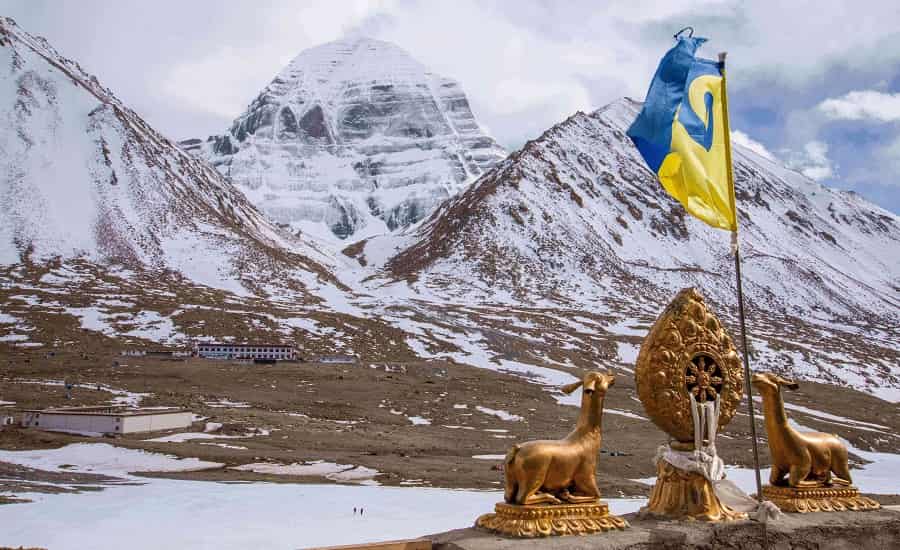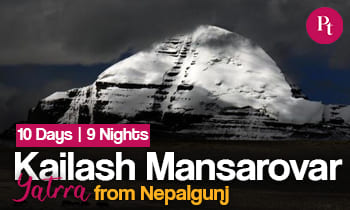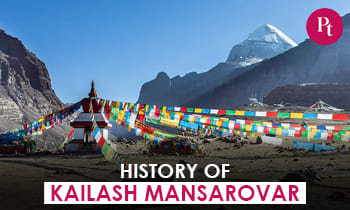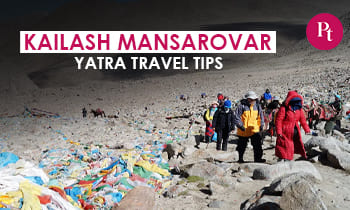Among the winding roads of the vast western Tibet lies Kailash Mansarovar, a sacred site of pilgrimage for Hindus, Buddhists, Jains, and Bonpos. Many pilgrims and adventurers visit this sacred mountain and its big lake Mansarovar to unravel the mystery, appreciate the magnificent spirit, and enjoy the serenity of the place. However, careful planning about the weather conditions, seasons, and precipitation levels should be considered for this supreme journey. Through this main guide, we shall look into the best time to visit Kailash Mansarovar by offering a pilgrimage that is spiritually rich by leaving the physical discomfort behind.

Understanding the Seasons
Spring (April to June)
It is no surprise that spring is a favorite season for tourists to Kailash Mansarovar. The first thing that is noticeable during the season is the temperature getting up whereas the snow starts melting thus, making the trekking routes more accessible.
The spring temperature varies between 5 °C and 15 °C, creating an acceptable weather condition for the pilgrims. The meadow-like surroundings are a delight to the spectator’s eyes and give an idyllic frame for the pilgrimage.
Summer (July to September)
Summer has to offer better and much comfort to those who prefer moderate or light weather. Nevertheless, the rainfall also increases but the affected area is not as wide as the dry season would demand and daily showers are possible.
Temperature may range from 10°C to 20°C thus; it is a serene climate for trekking around the sacred mountain. The Lake Mansarovar is also easily contactable during these months, which allows the pilgrims to perform rituals and take holy dips.
Autumn (October to November)
Autumn brings the end of the monsoon so that we can watch the stellar views of the imposing ranges and the snow-capped peaks. The weather doesn’t get too chilly like in winter, which makes it a good season for hiking and spiritual practices.
Temperatures in autumn are likely to be between 5°C to 15°C making the walk exhilarating and more pleasant. The scenery magically evolves into a wondrous blanket of stunning colors as the vegetation turns, making the panorama simply more attractive.
Winter (December to March)
We would like to inform you that visiting Kailash Mansarovar in winter is the least preferred time because of sky-high temperature and high level of snowfall. From its highest peak to the narrowest canyon, the region subjects’ trekkers to the harshest weather conditions while making the routes challenging and risky.
Temperatures can fall as low as -10°C, therefore being a threat to the health of the pilgrims. The Mansarovar being iced over during that time did not allow the religious rites and ceremonies to be performed that were to be conducted by the public.
Temperature Considerations
Temperature related to the season’s changes is very important for carrying out the pilgrimage planning to Kailash Mansarovar safely and comfortably.
Spring (April to June)
Daytime air temperatures fluctuate between 10°Cto 15°C which is a suitable microclimate for hiking and other activities.
Nights can still be cold with temperatures occasionally registering as low as 0°C. Pilgrims are supposed to expect the coolness of evenings and nights when they take along essential clothing items like jackets and sweaters.
Summer (July to September)
The daily temperatures during summer can reach up to 20°C during the day, with a moderate and hospitable atmosphere for the activities of pilgrimage.
A phenomenon may occur during which nighttime temperatures hover between 5°C and 10°C, bringing relatively warmer nights nonetheless, even if there is a chance of rain sometimes, it is better to put on a raincoat.
Autumn (October to November)
During the day, when temperatures are between 10°C and 15°C, the mountains are a good place for making pilgrimage and meditating.
The night turns to cool, with the temperature plummeting to about minus zero at night. The pilgrims should be advised to carry a set of clothing that can be worn in a layered manner to ward off the cold nights that come.
Winter (December to March)
The region is also known for its severe cold weather to the extent that in the winter the temperatures during the day can range from -5 º C to 5°C. Pilgrims should wear a good winter jacket and use an ice pick or snowshoes for safety.
Evenings are utterly freezing, with the temperature often dropping to -10°C or below. Hiking becomes harder than before and the risk of frostbite becomes very high. Due to harsh weather conditions winter visits should be avoided.
Choosing the Best Time
For Spiritual Significance
- The Spring or Autumn may sound ideal for pilgrims on a spiritual search. The weather is not extreme in these seasons, and the sacred sites are easier to access.
For Adventure Enthusiasts
- Adventure lovers who are enthusiastic about walking and thrilled with outdoor feelings might find a favorable climate in the summer season. The warm climate and the lack of clouds provide a good opportunity for a trekking adventure.
For Photography and Scenery
- Photographers and nature lovers seem to find autumn the most perfect period of the year to take photos of the beautiful landscape views of Kailash Mansarovar. Besides, the attractive scenery with beautiful colors and fresh air can become one of the dream pictures in your camera.
Avoiding Harsh Conditions
- The adventurer should ideally plan their trip to the park during spring or fall to avoid the difficult winter conditions of extreme cold and more challenging treks. This part of the year is a less auspicious moment for the accomplishment of pilgrimages due to safety concerns and restricted access to the sacred sites.
Preparation and Essential Tips
Clothing
- Whichever season is chosen, the layers of clothing are necessary. The thermal wear set, waterproof jackets, and durable hiking shoes must be included in the weather-related clothing.
Altitude Sickness
- The Mansarovar Kailash is at a high altitude and pilgrims should approach the extreme altitude gradually to avoid altitude sickness. These recurrent challenges can be curbed by proper rest, an adequate amount of water, and prescribed drugs.
Permit and Documentation
- Ensuring to get all of the required permits and documentation well before the due date is necessary. Make sure you study the existing travel regulations and observe all the orders issued by local authorities.
Guided Tours
- The fact that guided tours are run by experienced organizers who know the area well makes this an interesting option. They will play critical roles in offering support, and logistics and helping in the pilgrimage to achieve greater security for all pilgrims.
Cultural Sensitivity
- Respect Local Culture and Traditions. Wear modest clothes, respectfully join the rites, and comply with the appropriate recommendations advertised by the local authorities.
At the very end of the article, the most suitable time to go for the Kailash Mansarovar journey should be determined by taking the weather conditions, the temperatures, and personal likes into account. Be it seeking personal enlightenment, thrill, or appreciation for the diversity of nature, each season will give you unforgettable memories. Being thorough in planning and giving due importance to the holy territory, the pilgrimage to Kailash Mansarovar can be a transformative experience for a lifetime.










 Call
Call WhatsApp
WhatsApp Enquiry
Enquiry